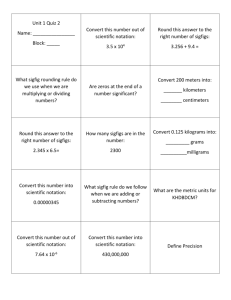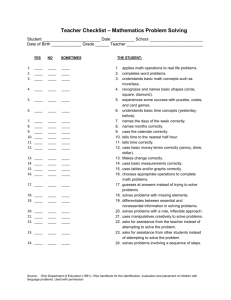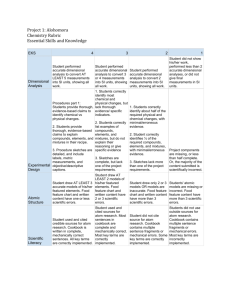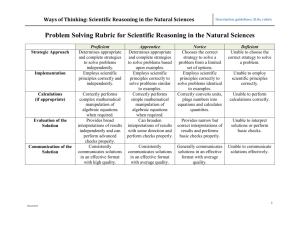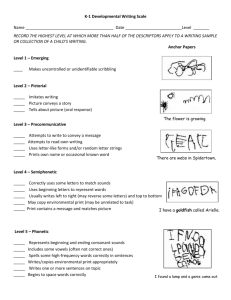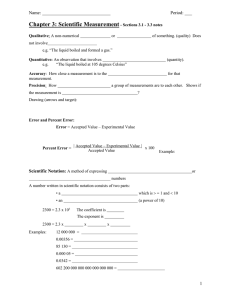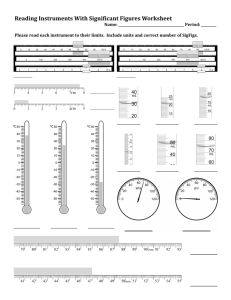CP CHEMISTRY STUDY GUIDE
advertisement
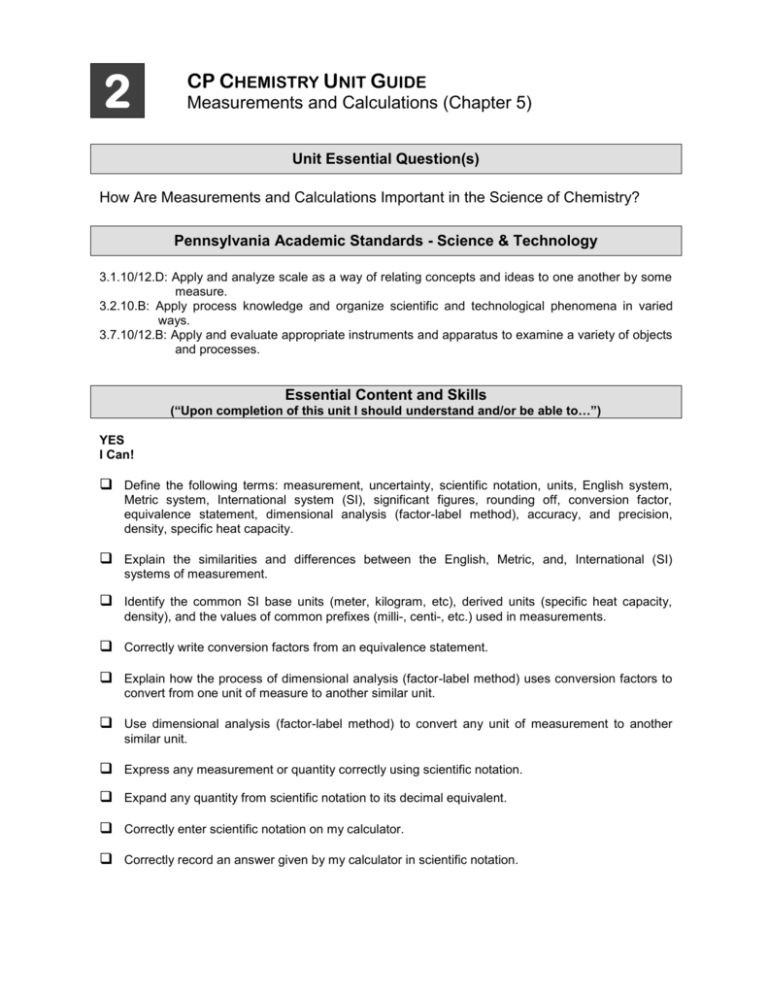
2 CP CHEMISTRY UNIT GUIDE Measurements and Calculations (Chapter 5) Unit Essential Question(s) How Are Measurements and Calculations Important in the Science of Chemistry? Pennsylvania Academic Standards - Science & Technology 3.1.10/12.D: Apply and analyze scale as a way of relating concepts and ideas to one another by some measure. 3.2.10.B: Apply process knowledge and organize scientific and technological phenomena in varied ways. 3.7.10/12.B: Apply and evaluate appropriate instruments and apparatus to examine a variety of objects and processes. Essential Content and Skills (“Upon completion of this unit I should understand and/or be able to…”) YES I Can! Define the following terms: measurement, uncertainty, scientific notation, units, English system, Metric system, International system (SI), significant figures, rounding off, conversion factor, equivalence statement, dimensional analysis (factor-label method), accuracy, and precision, density, specific heat capacity. Explain the similarities and differences between the English, Metric, and, International (SI) systems of measurement. Identify the common SI base units (meter, kilogram, etc), derived units (specific heat capacity, density), and the values of common prefixes (milli-, centi-, etc.) used in measurements. Correctly write conversion factors from an equivalence statement. Explain how the process of dimensional analysis (factor-label method) uses conversion factors to convert from one unit of measure to another similar unit. Use dimensional analysis (factor-label method) to convert any unit of measurement to another similar unit. Express any measurement or quantity correctly using scientific notation. Expand any quantity from scientific notation to its decimal equivalent. Correctly enter scientific notation on my calculator. Correctly record an answer given by my calculator in scientific notation. Explain how uncertainty in measurements arises. Explain the difference between accuracy and precision, and the relationship between precision and SigFigs. Determine the correct amount of SigFigs, according to the rules learned in class, for any number or value. Correctly measure an object (Length, mass, volume, etc.) using the proper instrument and record measurements using appropriate significant figures (SigFigs). Correctly round off any number or value to a specified amount of SigFigs. Correctly determine and record the amount of SigFigs allowed in a calculated answer, based on the initial measurements and mathematical operations used in the calculation. Explain the concept of density and correctly calculate density, mass, and/or volume using the density formula. Explain the concept of specific heat capacity and correctly calculate any missing variables using the correct formula (Q=msΔT).

